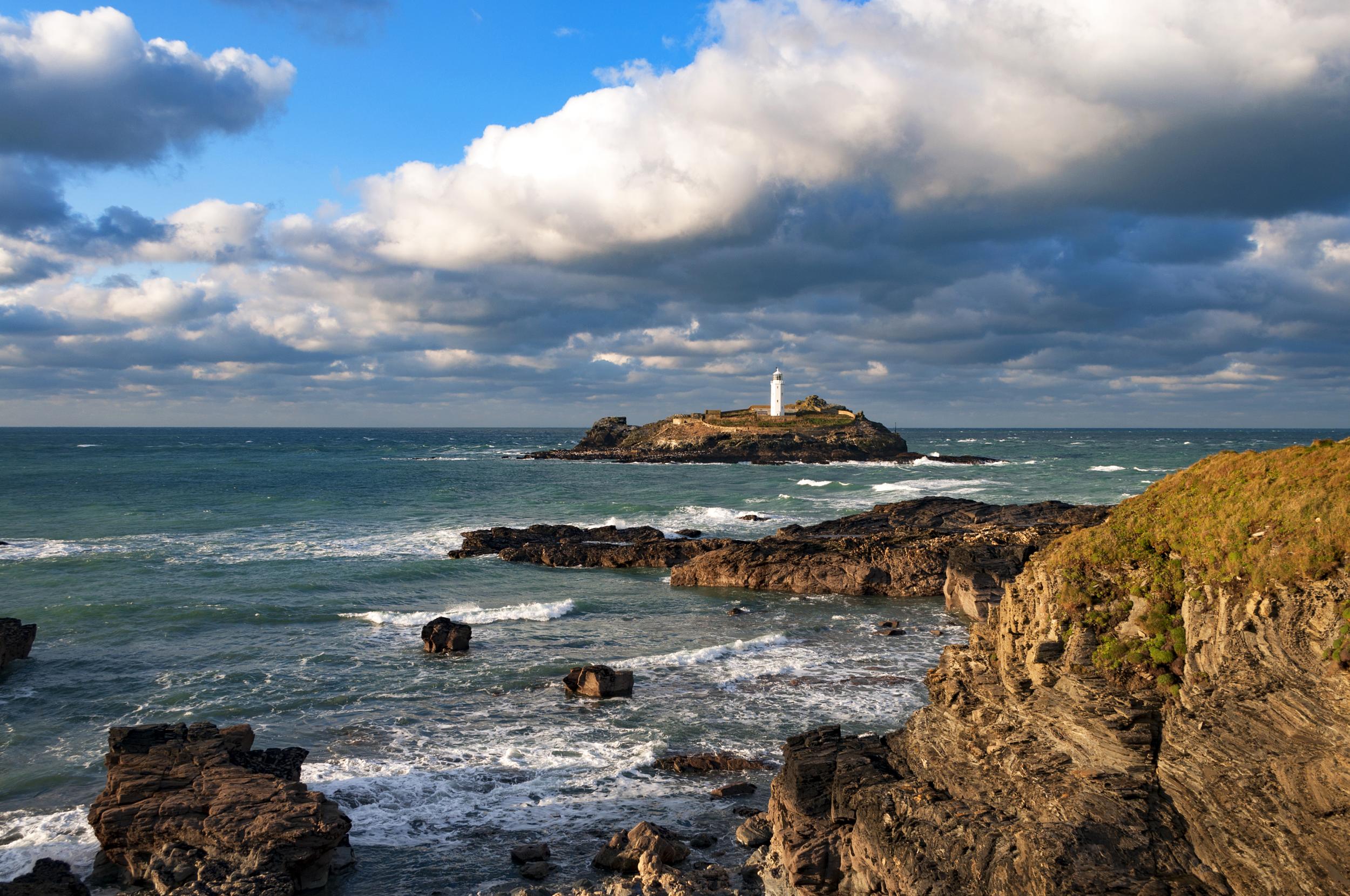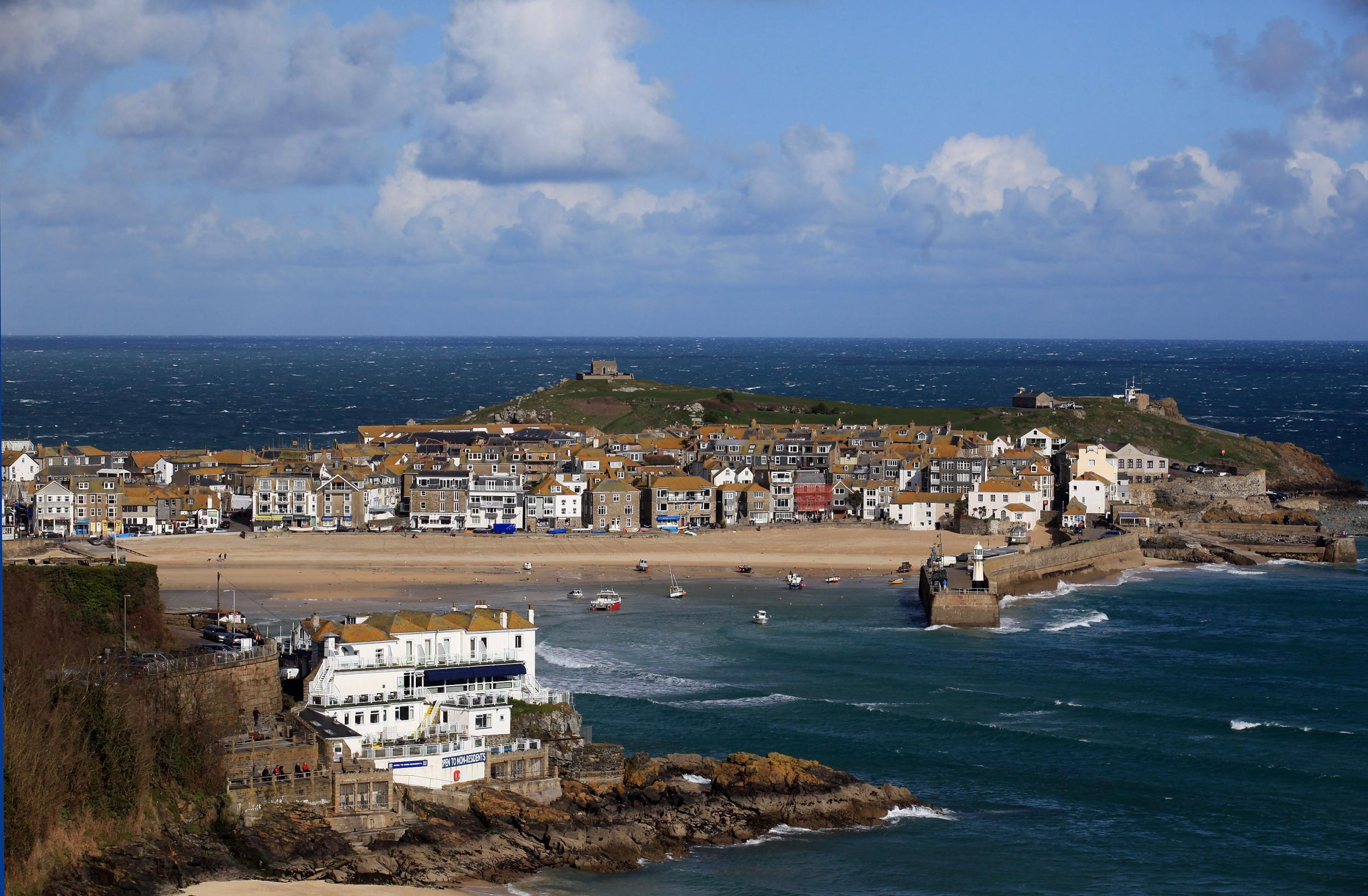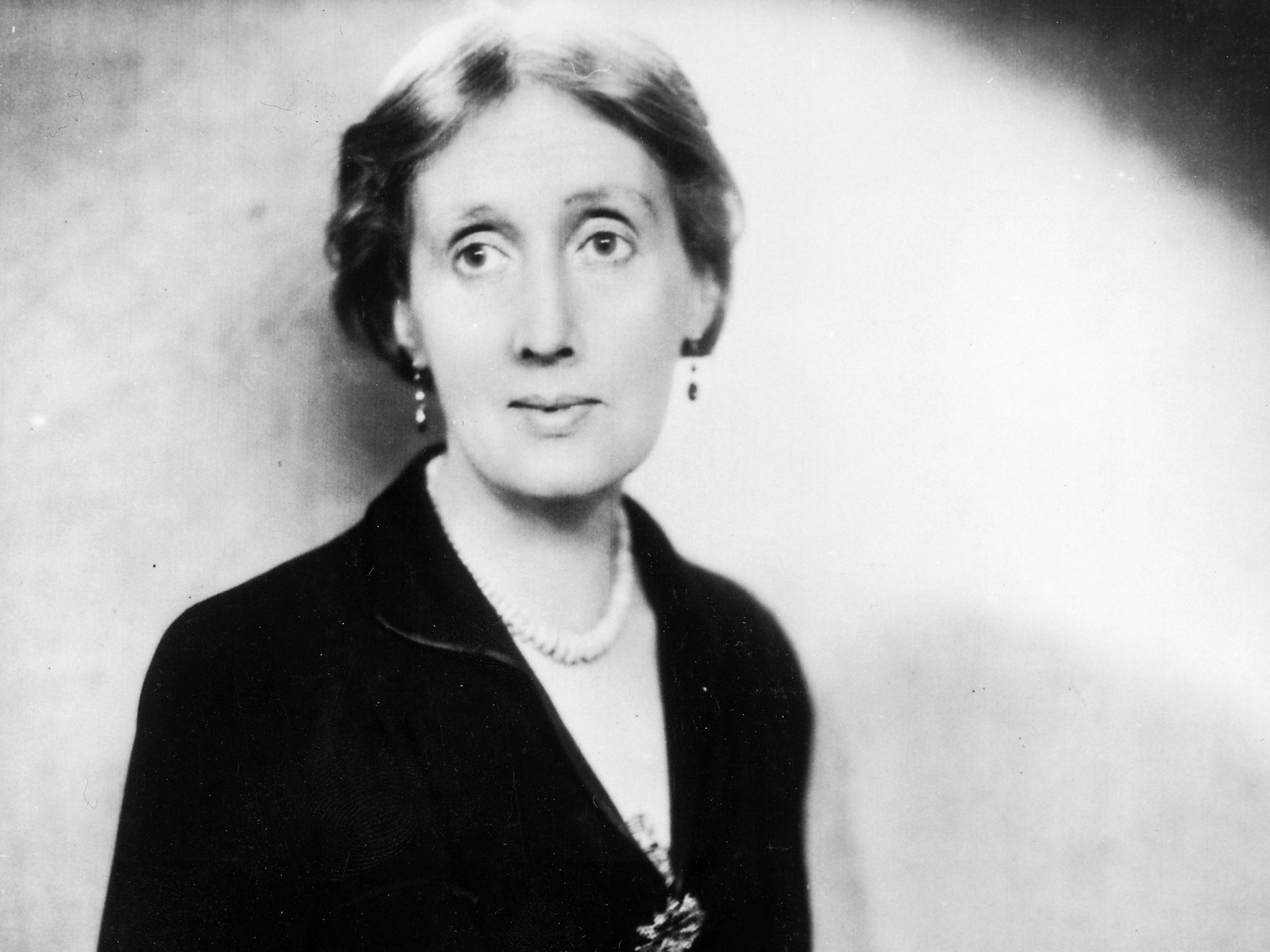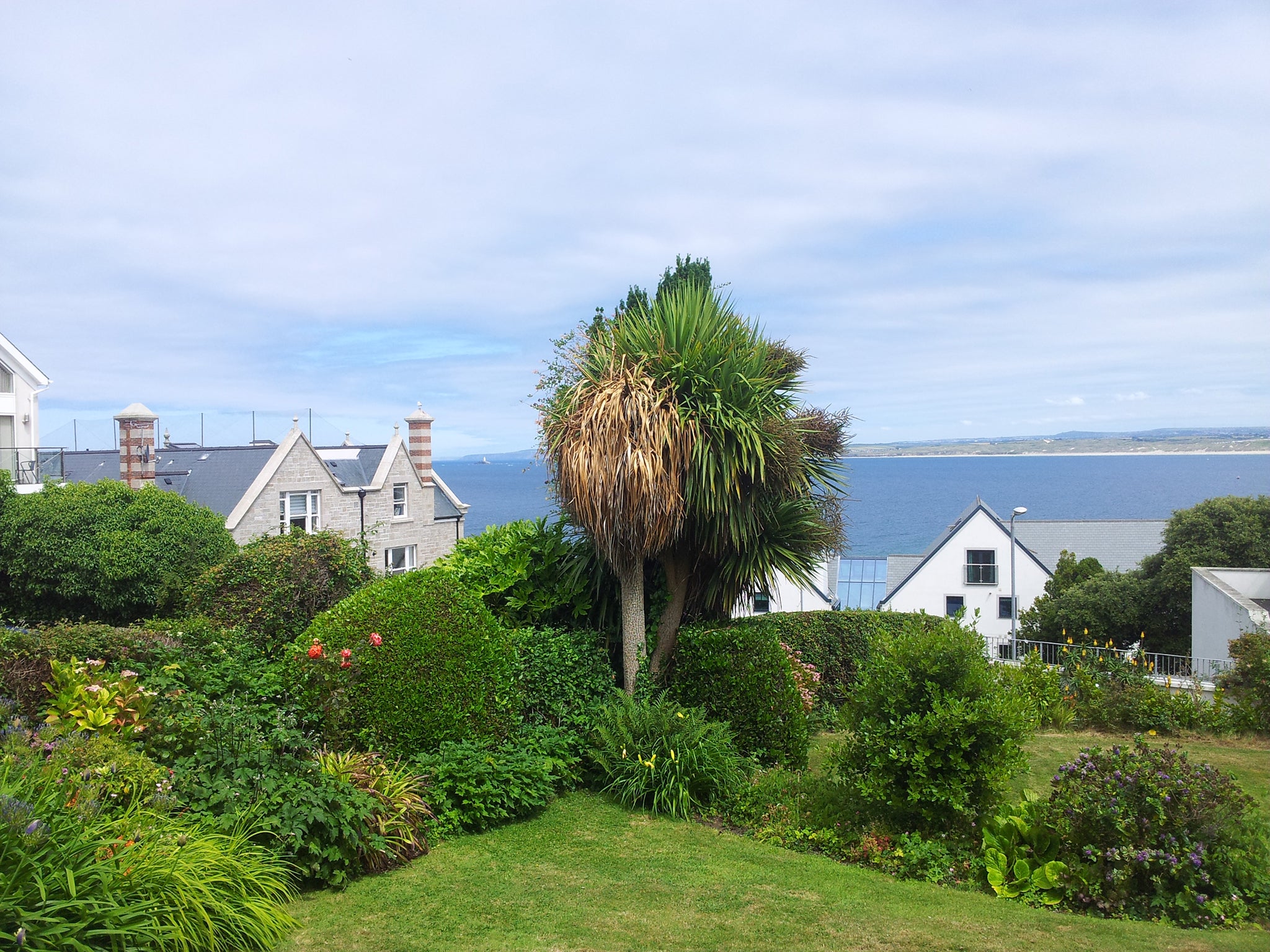Back to the lighthouse: In search of Virginia Woolf’s lost Eden in Cornwall
The vast coastal county of Cornwall had a profound effect on an impressionable young girl, who would go on to become a literary star

Your support helps us to tell the story
From reproductive rights to climate change to Big Tech, The Independent is on the ground when the story is developing. Whether it's investigating the financials of Elon Musk's pro-Trump PAC or producing our latest documentary, 'The A Word', which shines a light on the American women fighting for reproductive rights, we know how important it is to parse out the facts from the messaging.
At such a critical moment in US history, we need reporters on the ground. Your donation allows us to keep sending journalists to speak to both sides of the story.
The Independent is trusted by Americans across the entire political spectrum. And unlike many other quality news outlets, we choose not to lock Americans out of our reporting and analysis with paywalls. We believe quality journalism should be available to everyone, paid for by those who can afford it.
Your support makes all the difference.Virginia Woolf wasn’t always the radical we imagine today. Before the debates on truth and beauty with her circle of early 20th-century artists, intellectuals and writers known as the Bloomsbury Group; before the polemic feminist lectures at Cambridge; and before the ever-constant push to experiment with new forms of fiction, there was the impressionable young girl, born Adeline Virginia Stephen, who spent seaside summers in Cornwall, on England’s rugged south-western tip.
On a gray morning last October, I found myself on the Great Western Railway, rolling along the same route that Woolf would have taken about a century before, the train hugging tight past a progression of wide swathes of golden sand and languidly sloping green cliffs, with the deep blue of St Ives Bay and the Godrevy Lighthouse in the distance.
The rail line to the coastal town of St Ives opened in 1877, causing a huge uptick in tourism there, and it is easy to understand how it would have lured well-to-do Britons like her family to this once hard-to-reach stretch of Cornwall, now a thriving arts haven with its own branch of the Tate museum.
Long an admirer of this modernist literary pioneer – not only for how Woolf redefined the possibilities of the novel but also for the simple reason that no other writer has given me, sentence for sentence, such pleasure – I decided to go in search of Woolf in her early years.
I headed to the vast coastal county that, by most accounts, had a profound effect on her future writing, making its way into the novels Jacob’s Room and The Waves, and forming the basis of one of her greatest works, To the Lighthouse.

Woolf’s summers in Cornwall were a reprieve from her upper-middle-class life in London, where, for most of the year, she spent her days in “the rich red gloom” of a tall London town house.
A Victorian girl bound by Victorian-era trappings, she took informal school lessons in a dining room filled with carved oak and marble, ventured on monotonous twice-daily outings to nearby Kensington Park and awaited a future of ballroom dances in satin dresses and pearls.
Her father, the renowned literary critic and historian Sir Leslie Stephen, rented a house overlooking St Ives Bay in Cornwall, which he described in an 1884 letter as “a pocket-paradise with a sheltered cove of sand in easy reach (for ‘Ginia even) just below”.
That house, that bay, that lighthouse: all would be immortalised in her famous novel. While Woolf was always careful to abstract somewhat from her personal past, and set To the Lighthouse on the Scottish Isle of Skye, it’s steeped with almost direct imagery from her time in Cornwall.
From 1882, when she was only a few months old, to 1894, when she was 12 – the year before her mother died – Woolf spent a few months each year at Talland House, situated on the outskirts of St Ives, then a small fishing town on the Cornish coast.
It was the sheer physical freedom of Cornwall, compared with the constrictions of Woolf’s London life, suggest scholars Marion Dell and Marion Whybrow in Virginia Woolf & Vanessa Bell: Remembering St Ives, that helped her buck against the constructs of her day and conceive of independent achievement.
Woolf roamed free in the salty air of the sloping garden, with the expanse of the bay and its distant lighthouse before her. She swam and poked among rock pools down at the beach below and hunted great-winged moths on rambling nighttime expeditions.
“In retrospect nothing that we had as children made as much difference, was quite so important to us, as our summer in Cornwall. The country was intensified, after the months in London”, and formed “the best beginning to life conceivable”, she wrote in 1940 at age 58, in her autobiographical essay “A Sketch of the Past”.
Celebrating St Ives’s outsize role in Woolf’s life, and a marker in its own right for how far the town has grown, is the recently refurbished and extended Tate St Ives, one of the art museum’s two branches outside London, which runs Virginia Woolf: An Exhibition Inspired by Her Writings, until April 29, in its sprawling new hall.
But while St Ives has dramatically evolved from Woolf’s day, some parts of Cornwall, a sprawling county with a population of more than half a million, seem frozen in time. Just down the coast, I found a rural, stark, ethereally beautiful landscape that remains today, despite the occasional car and hurtling tractor, close to how Woolf would have remembered it as a child.
Once a 10-hour trek from London, the train journey to St Ives today can be made in less than six. Winding my way up from the town’s sole rail station, as Woolf and her family would have done – with cooks, servants and mounds of luggage – the mid-19th-century stone villa looms large, seemingly incongruous among the motley assortment of architecture that has sprung up around it, like the glossy modern apartment complex with glass balconies next door.

“Her family would move their entire way of life, their whole household, for two or three months out of the year to this house with a magical garden in this very remote setting, and it would become a kind of Eden for her, the place she would idealise and always remember,” said Alexandra Harris, author of Virginia Woolf and a professorial fellow at the University of Birmingham in England.
“In ‘To the Lighthouse,’ Woolf, as a successful middle-aged writer, comes face to face with her mother in the garden which is very much the garden at Talland House,” Harris said. “The novel embodies the feeling of having left something unfinished through those childhood summers.”
To the Lighthouse encapsulates Woolf’s love and longing for her mother – as well as her conflicted view of her mother’s vision of Victorian womanhood. All those bottled-up feelings, seemingly suspended in time after the family gave up Talland House following Julia Stephen’s death, found their release in the novel.
Woolf herself wrote as much in “A Sketch of the Past”: “When it was written, I ceased to be obsessed by my mother. I no longer hear her voice; I do not see her.”
While Talland House was carved into five flats in the 1950s and isn’t open to the public, visitors can, from Talland Road above, catch a glimpse of the sloping garden, the house’s cream-coloured facade and views across St Ives Bay to the iconic Godrevy Lighthouse. Although for the best tableau, it’s best to mimic the writer and her three siblings on their first trip back to the house as adults.
“We passed through the gate, groped stealthily but with sure feet up the carriage drive, mounted the little flight of rough steps,” wrote Woolf in a 1905 diary entry, adding that they peered through a chink in the escallonia hedge and “hung there like ghosts”.
The original wooden gate no longer exists, although the “rough steps” and hedging, now about chest-height, are still there, beyond which is a full-on view of the house and its stately French windows and balconies. Visitors can also walk up the paved driveway, the former “carriage drive”, around the side of the garden, said Peter Eddy, the house’s longtime owner (with his brother, John Eddy), who met me there.
I found Eddy with a few of the house’s current residents, Woolf enthusiasts who are also deeply embedded in the town’s fabric (one is the chairman of the St Ives Chamber of Trade and Commerce, another a volunteer at the St Ives Archive). Ad hoc gatekeepers of the Talland House myth, they were poring over a map of the property from 1906 and historical photos, which showed a smaller and less imposing house. (Roof and side extensions were added later.)
I walked around, soaking up the spirit of the place. The garden is more manicured now, lacking the bursts of colour from fiery red-hot pokers, and various pockets of charm, which were given names like the “love corner”, “coffee garden” and “lookout place,” that had defined the original garden.
Yet a few relics remain, including feathery spears of pampas grass near where Woolf would have played evening games of cricket, and mixed hedging around the garden’s bottom border that included Woolf’s beloved escallonia, “whose leaves, pressed, gave out a very sweet smell”.
Looking across St Ives Bay from the garden, I recalled one of the best-known lines from To the Lighthouse: “For the great plateful of blue water was before her; the hoary Lighthouse, distant, austere, in the midst ...”
Woolf fans have been concerned about the obstruction of this view ever since Cornwall Council granted planning permission in December 2015 for an apartment complex to be built below Talland House. But on my visit, it was not clear to me this would happen. I couldn’t find any signs of construction, and permission is set to expire if work doesn’t start by December 2018.

Just minutes’ walk away is Primrose Valley, an area once blanketed with apple orchards and a little dirt path that Woolf and her youthful siblings would have taken down to Porthminster Beach below. Now, sprawling houses with gray-shingled mansard roofs edge up to one another, with hedging and moss-covered stone lining a paved route. The beach, though, with its wide crescent of smooth, powdery sand and turquoise bay, still retains its essential, sweeping majesty.
From the beach, it was a few blocks to the centre of St Ives. I walked past a girl with a butterfly net and thought of Woolf, and got lost among the labyrinth of cobbled streets. But I couldn’t find much left of the “windy, noisy, fishy, vociferous, narrow-streeted town”, as Woolf recalled it.
Long gone are the wooden boats that would have been anchored near the shore, awaiting the pilchards – small, sardine-like fish that would come into the bay by the millions. All that has largely been scrubbed clean, replaced with a more tourist-friendly image: St Ives, the arts haven by the sea.
Woolf was witness to the beginning of this change. In To the Lighthouse, she noted that the artists had already started to come to the fictional fishing town inspired by St Ives, perhaps a reference to the American painter Whistler, who stayed in St Ives in 1883 and 1884.
In the early- to mid-20th century, a new wave of artists made their way there, most notably Barbara Hepworth, Ben Nicholson and Naum Gabo, whose abstract sculptures and paintings were inspired by the area’s landscape.
For the first time, these modernist works have a permanent dedicated space in the Tate St Ives, which has a vast new extension dug into a hillside off Porthmeor Beach, a favoured spot with surfers that doubled the museum’s gallery area in October.
While traces of Woolf’s work were noticeably absent at the museum in autumn, Virginia Woolf: An Exhibition Inspired by Her Writings, showcases the works of more than 80 artists, including her sister, the painter and Bloomsbury Group member Vanessa Bell, who have either been directly influenced by Woolf or explore recurring themes important to her, such as feminist perspectives on domesticity.
Bell, one of Woolf’s greatest confidantes, received a rather alarming letter, written on Christmas Day, 1909. “I went for a walk in Regents Park yesterday morning, and it suddenly struck me how absurd it was to stay in London, with Cornwall going on all the time,” Woolf wrote. Woolf impulsively purchased a train ticket and arrived at the Lelant station, near St Ives, at 10:30 p.m., without “spectacles, cheque book, looking glass, or coat”.
Pacing that same platform recently, I was struck by how Woolf might have chosen her lodging: the Lelant Hotel, now the Badger Inn, was the closest accommodation, looming large up a short, steep walk to the top of Station Hill.
There, I met Paul O’Brien, the pub’s historian, who has put together snippets of Woolf’s letters about Lelant, a village of 1,056 residents, in a frame that hangs on a wall near the bar. It was a Tuesday afternoon, and convivial locals were drinking pints of St Austell’s Tribute, a popular regional ale, their dogs underfoot.
From the Badger Inn, it’s about 7 miles to Godrevy, a beach and headland that is now part of the National TruSt There, sunlight streamed down through the clouds and seemed to reflect the golden sands, lighting up the whole place in the area’s infamously soft glow. I walked past wild flowing grasses before reaching the closest point on shore to Godrevy Island and its lighthouse. And then the literary landmark stood before me: stark, solid, sacrosanct.
Woolf’s next trip to Cornwall was more scripted. Back in London and nearing, at age 28, the end of her first novel, The Voyage Out, Woolf spiraled into a mental breakdown so severe it landed her in Burley Park, a home for mentally ill women outside the city. (While Hermione Lee, arguably the foremost Woolf expert, called her “a sane woman who had an illness” in her biography Virginia Woolf, she also associated Woolf’s symptoms with what would now be recognised as manic-depressive illness or bipolar disorder.)
Part of her recuperation that summer was a walking tour around Zennor, the name of both a tiny village and parish (population 207), just south-west of St Ives, with a nurse, Jean Thomas.
Tramping through a light mist, I found my way to the handsome stone farmhouse where Woolf and Thomas stayed, now the private residence of Lee and William Berryman, whose family has lived and worked on the surrounding farmland for more than 400 years. Inside their cosy sitting room, Lee Berryman and I poured over small sepia-coloured photographs, some nearly a century old, of former lodgers. (My heart leapt when I found one of two women sharing a motorcycle and sidecar, although, while possessing the same independent spirit, it ended up not being Woolf and her nurse.)
Then we ventured outside, touring two nearby structures that have been turned into holiday accommodations, called Porthmeor Cottages. Chickens pecked outside a coop, and in the distance, cattle grazed open pastureland that seemed to drop off into the sea below.
Three years later, in 1913, a similar pattern of illness emerged. Woolf sank into periods of severe depression and was again admitted to Burley Park. In September, Woolf attempted suicide. After a period of rest, she slowly improved, and with her husband in 1914, headed again to Cornwall.
They spent a portion of their stay at Carbis Bay, a seaside resort village about a mile and a half up the coast from St Ives, that is today dotted with tanned surfers in wet suits on the beach and, looming above, whitewashed, glass-fronted villas.
The Carbis Bay Hotel & Estate, where the Woolfs stayed, has its own beach that was awarded Blue Flag eco-certification, as well as a spa. Its palm-tree-fringed views of the sweeping turquoise bay could have been from anywhere, more Caribbean than Woolf’s Cornwall. Except there, in the distance, was the Godrevy Lighthouse, and in a hallway off a glass conservatory hangs a photo of the couple from around that time, with Woolf’s guest signature in purple, below.
During the 1920s and 1930s, a creatively fruitful time for Woolf, when she worked on the three novels most closely associated with Cornwall, the couple mainly stayed in the parish of Zennor whenever they visited the area.
As I made my way around its medieval farming tracts, sweeping moors and winding coastal paths, I understood why. It was an antidote not just to the frenzy of London but also to the rapid growth of St Ives and Carbis Bay.
Off the main road and onto a dirt track sits the tiny hamlet of Poniou, which then, as now, consists of only three cottages beside three granite footbridges. I met Sue Allen, a longtime resident, who told me the Woolfs had stayed next door in 1921, with their bedroom facing the sea. Woolf marvelled at seeing Gurnard’s Head, a glorious headland named for the local fish, from that bedroom window.
Then as now, it remains the most distinctive landmark in the area. But it is still, as Woolf described it, “so lonely”, reachable either along a winding “rabbit path round the cliff”, or by following a faintly visible path through fields dotted with grazing cattle and rudimentary stone steps. Taking in the faintly sweet smell of cow dung and the roar of the waters crashing against the rocks below, I didn’t pass a single soul on two trips in October.
About 3 miles away is the private residence Eagle’s Nest, distinct and visible from the main road. The Woolfs stayed there with friends on several memorable visits, including on Christmas Day, 1926, which Woolf spent revising drafts of To the Lighthouse.
She despaired that “All my facts about Lighthouses are wrong” in a letter to an assistant at the publishing house, Hogarth Press, which she and her husband set up and ran.
The couple stayed there again in May 1936, Woolf’s last trip, at age 54, to Cornwall, an attempt to keep yet another breakdown at bay. They wandered round St Ives and crept into the garden of Talland House, and in the dusk, her husband wrote, “Virginia peered through the ground-floor windows to see the ghosts of her childhood.”
I peered through those same windows, and I imagined the writer trying to recapture a vanished past when life had felt so new, seeing only inescapable childhood ghosts basking in summer days of exquisite happiness.
© New York Times
Join our commenting forum
Join thought-provoking conversations, follow other Independent readers and see their replies
Comments